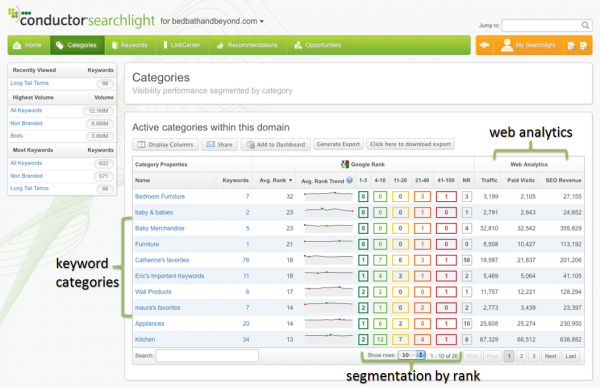How Big Data Changed Crime Fighting & Is Changing The Practice Of SEO
In the mid 1990’s, New York city Mayor Rudolph Giuliani introduced a technology-based crime measurement system called CompStat. The system enabled Police leadership, for the first time, to discern crime trends and respond to crime fluctuations on a neighborhood-by-neighborhood basis rather than the limited incident-by-incident view they previously had. The system is credited with a […]
In the mid 1990’s, New York city Mayor Rudolph Giuliani introduced a technology-based crime measurement system called CompStat. The system enabled Police leadership, for the first time, to discern crime trends and respond to crime fluctuations on a neighborhood-by-neighborhood basis rather than the limited incident-by-incident view they previously had.
The system is credited with a 60% drop in major crime and has subsequently been adopted by major cities including Washington DC, Los Angeles, Baltimore, and Philadelphia. Interestingly, all that really sparked the change was the acquisition of information—trend insights into neighborhood crime patterns over time.
In the 1999 interview, “Betting on Intelligence,” CompStat creator Jack Maple outlines the fundamental principles behind CompStat:
- Accurate, timely intelligence clearly communicated to all.
- A rapid deployment that is concentrated, synchronized and focused.
- Effective tactics and strategies.
- Relentless follow-up and assessment.
A phenomenon that follows a similar arc of intelligence acquisition and process is occurring today in the natural search industry.
Shift From Limited View To Landscape View
In much the same way the NYPD moved from examining individual incidents to mapping crimes and compiling data to expose crime trends, the search industry is moving from an ‘incident by incident’ (keyword-by-keyword) view to a technology-powered ‘neighborhood by neighborhood’ (search landscape) view.
Driven by mature technology that gathers, stores and analyzes natural search data over time and allows for segmentation on a ‘neighborhood-by-neighborhood basis’, this information empowers SEO professionals to discern trends and communicate, report and act on these trends with maximum efficiency.
Specifically, technology-enabled collection and analysis of ‘big data’ in the SEO industry has enabled marketers to take a new, broad neighborhood view of their natural search landscape as opposed to the keyword by keyword perspective they were previously limited to (see screenshot below for more on how technology is enabling that view).
The new standard for search marketers as Police Chiefs of their online cities is to understand what is occurring on a holistic, global basis, thus arming themselves to respond to both opportunity and threat in their own online ‘neighborhood.’

Technology enables a landscape view over time
Rethinking The Approach In Search Marketing
Aside from making you aware of trends taking place in our industry, why does this matter to you as a Search Marketer?
For many still operating in the SERPs with a ‘pre-CompStat’ (pre-enterprise SEO technology) mindset, the approach is still an ‘incident by incident’ one. Many may not be aware that a ‘CompStat’ broad, data-driven view that empowers SEOs to be the informed Police Chief of their online city is even possible.
Others may need to actively change their thinking from that of Police Chief with an incident-by-incident view to one of a Police Chief who has clear insight into the unique segments of their city. This might include establishing similar principles as Jack Maple did for CompStat.
In SEO, these guidelines may be formed by asking yourself:
- Given access to natural search trend data, segmented by the unique ‘neighborhood’ topography of your online city, how would your practice of SEO change?
- Would you approach opportunity discovery any differently?
- Given your newfound ability to measure, would your willingness to try new things change?
- How about your approach to major projects such as a site redesign?
Technology In SEO Is The New Norm
In the late 1980s before he invented CompStat, Jack Maple manually plotted crimes across subway stations on a 55-foot-long wall map. Graduating to technology as a solution that kept track of crimes, not only by location but over time, allowed for analysis of crimes by neighborhood, effective modification of tactics, and manpower deployment with follow-up.
In a remarkably similar way, this evolution to data technology is mirrored in the search marketing world. Once tethered to expansive excel spreadsheets, search marketing teams now have access to technology that allows for tracking global natural search trends in a previously inaccessible manner.
When Mayor Giuliani launched CompStat in the late 1990’s, one can imagine that there were Police Commanders who resisted the technology, insisting on doing things the old, gut-driven way. Others may have been skeptical about the kind of impact mere ‘information’ could have on their ability to influence their neighborhoods.
But with time, they came to realize that understanding the broad, trended view on a neighborhood-by-neighborhood basis, knowing where and when to deploy resources, modify tactics or try new things is vital to operational success in their neighborhoods, and indeed, leveraging technology to gain that view is the future of their industry. The alternative, perhaps, was to be left behind.
Contributing authors are invited to create content for Search Engine Land and are chosen for their expertise and contribution to the search community. Our contributors work under the oversight of the editorial staff and contributions are checked for quality and relevance to our readers. The opinions they express are their own.
Related stories
New on Search Engine Land